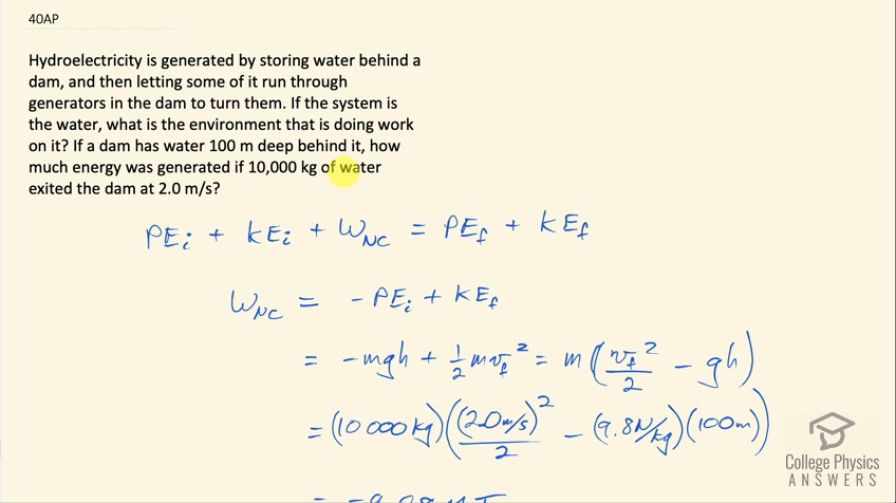Question
Hydroelectricity is generated by storing water behind a dam, and then letting some of it run through generators in the dam to turn them. If the system is the water, what is the environment that is doing work on it? If a dam has water 100 m deep behind it, how much energy was generated if 10,000 kg of water exited the dam at 2.0 m/s?
Final Answer
Solution video
OpenStax College Physics for AP® Courses, Chapter 7, Problem 40 (Test Prep for AP® Courses)

vote with a rating of
votes with an average rating of
.
Calculator Screenshots
Video Transcript
This is College Physics Answers with Shaun Dychko. Some water is blocked behind a dam and the water is 100 meters deep and 10000 kilograms of that water exits the dam at 2.0 meters per second after it passes through some generator turbines. The system is the water and the question is what is the environment that's doing work on it? Well, there is gravity and there is the generator both doing work on the water and since gravity is a conservative force, it manifests as a change in potential energy whereas the generator is a non-conservative force and so it is included in this term work done by non-conservative force. So we can figure out the work done that's non-conservative on the water and that's going to equal the negative of the potential energy because the final potential energy is zero since we'll take the reference level to be the level where the water exits the dam and we subtract PE i from both sides and then we have an initial kinetic energy of zero and so we are left with only kinetic energy final on the right hand side of this equation. So the initial potential energy is the mass of water times gravitational field strength times the water's initial height of 100 meters plus one-half times the mass of water times its final speed squared and we can factor out m and switch the terms around and we have m times vf squared over 2 minus gh. So that's 10000 kilograms times 2.0 meters per second squared divided by 2.0 minus 9.8 newtons per kilogram times 100 meters and this is negative 9.78 megajoules; this is 9.78 times 10 to the 6 joules, in other words. The next question is: how much energy is generated? So in that case, we are asking what is the work done on the generators and that's going to be the opposite to the work that the generators do on the water and so that's negative of negative 9.78 megajoules; in other words, positive 9.78 megajoules of energy is produced.
